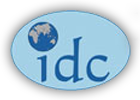Public Affairs and Economic Policy Unit
STUDIES UNDERTAKEN (2015-16)
Research has been organized to cover the following areas:
- Recent trends in India-successes and lessons:
The study proposes to examine the recent trends in Indian Manufacturing in the post liberalization era but tracing also the growth in the post 1980, 1986 and post 1991 period. The context of policy changes that impacted manufacturing growth and factors that facilitated or impeded progress. Major sectors like automobiles, farm equipment, machinery, basic industry would be chosen to study the development of manufacturing.
- Policy framework:
Major policies that have a direct or indirect bearing on manufacturing include:
a) Licensing and Governmental Controls
b) Access to raw materials
c) Access to Technology
d) Foreign Investment
e) Trade Policy
f) Policies affecting cost of production.
The study shall focus on the current policy framework and examine its impact on the manufacturing sector. - Challenges-perception and reality:
It is well accepted that in an open economy, the cost competitiveness determines establishment, growth and sustainability of manufacturing. Exceptions apply to restrictive manufacturing with barriers to entry. In other industry comparative cost of production is the single most important factor that decides success of ventures. Availability of raw materials at competitive prices, access to technology, access to domestic and global markets, availability and competitiveness of factors of production, efficiency of operations, quality of products and international competition are some of the other determinants. The research study proposes to determine the impact of these factors and try and distinguish also between perception and reality. It is expected to reveal the inter se prioritization of these determinants.
- Enablers:
It is proposed to scrutinize the factors that promote establishment of manufacturing and ensure its growth as well as long-term survival in globally competitive economy.
- Policy recommendations:
It is expected that based on the research outcome, policy recommendations can be suggested to promote healthy and competitive existence of manufacturing in India.
- Role of State Governments:
In the Indian Federal structure, the State Governments play a major role in establishment and operation of manufacturing. Local laws, infrastructure, land cost and availability, political and social stability are invariable determined by the State Governments. It is proposed to study the role of such factors in success of manufacturing and suggest appropriate policies that the states can follow to encourage industry in their respective domain. It is also proposed to study policies of incentives for establishment, geographical dispersal and employment.
- Industry initiatives:
The role of manufacturing sector in achieving quality and efficiency cannot be understated. The extent to which these factors and innovation impact manufacturing would be studied. Appropriate strategies for accessing technology and global outreach would also be focused upon as part of the research study.
- Marketing India and Marketing Made in India
There is no denying the role of marketing India as a destination so is the sequencing of approach to marketing. Factors that could make India an attractive destination for foreign investment need to be brought out especially in the context of Make in India initiative.



